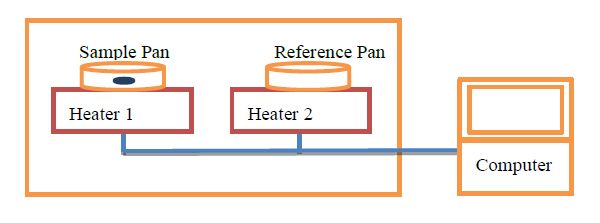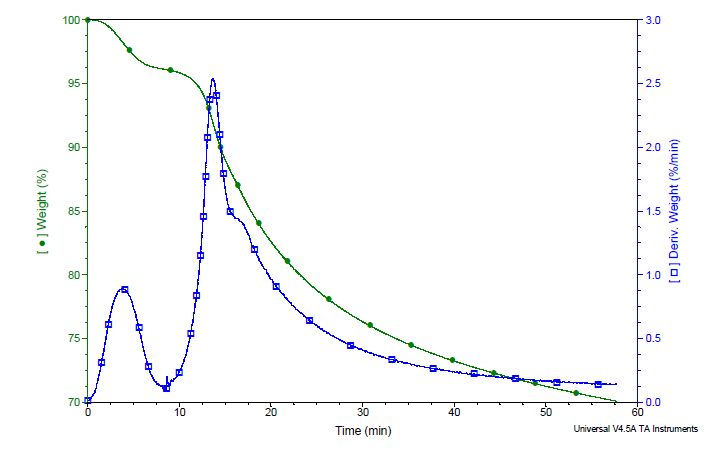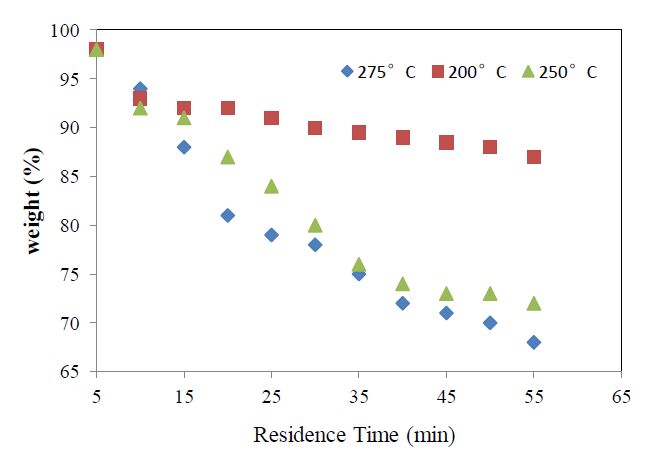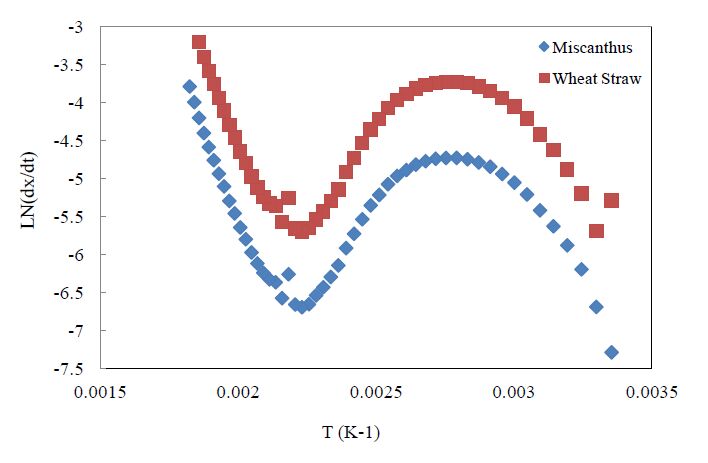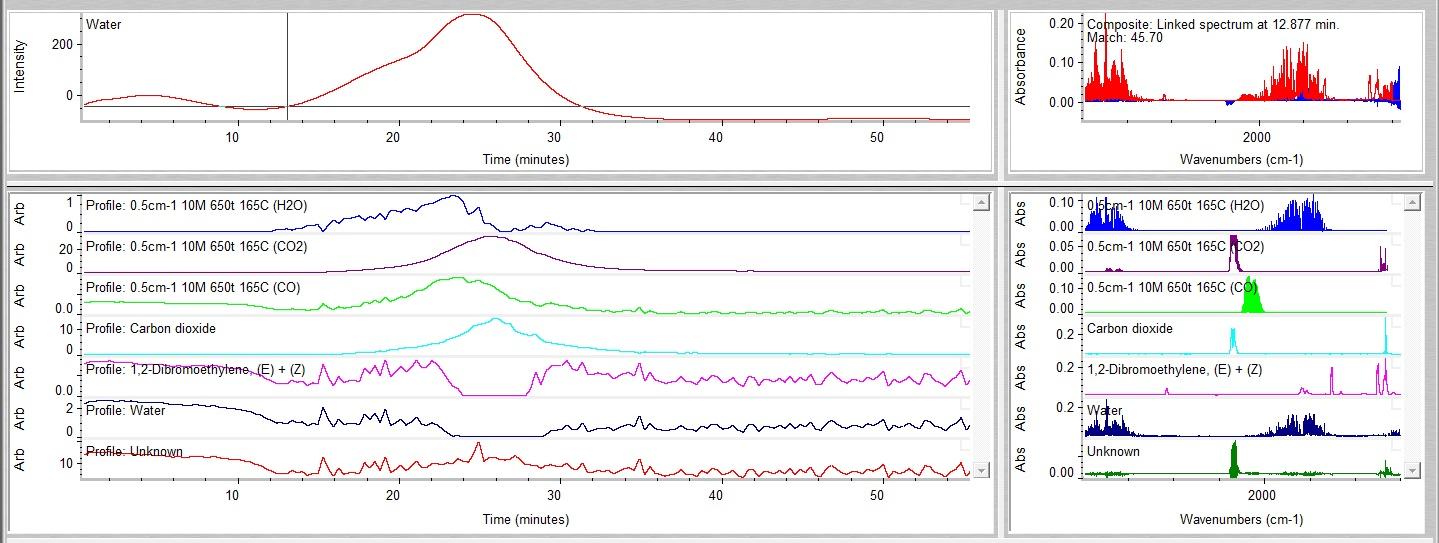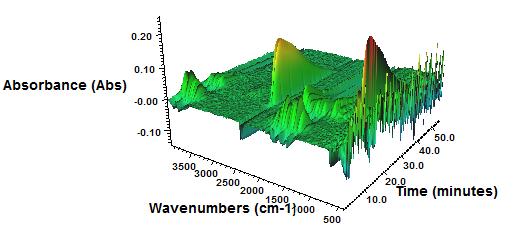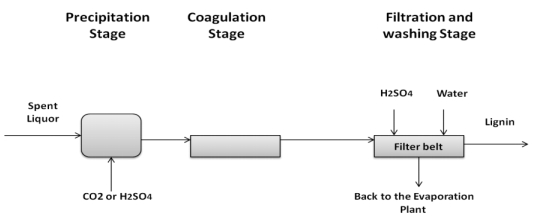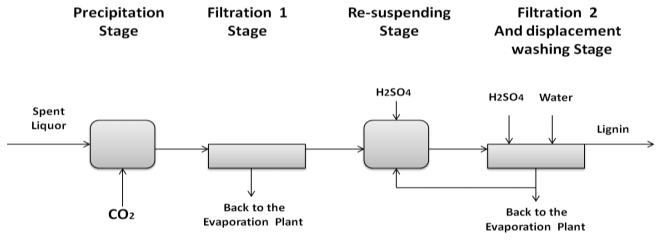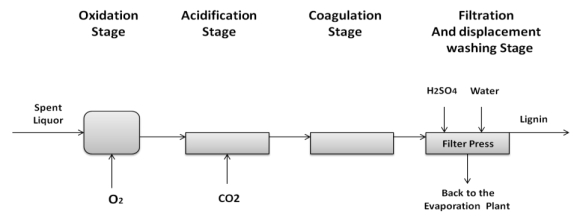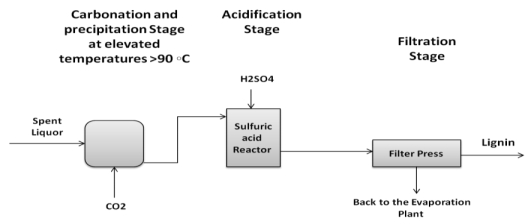|
[1]
|
Thuijl E, Van Roos C, Beurskens L (2003) An overview of biofuel technologiesmarkets and policies in Europe,1–64.
|
|
[2]
|
ExxonMobil (2016) The Outlook for energy: a view to 2040, 1–16.
|
|
[3]
|
Naqvi M, Yan J, Dahlquist E (2010) Black liquor gasification integrated in pulp and paper mills: A critical review. Bioresource Technol 101: 8001–8015. doi: 10.1016/j.biortech.2010.05.013

|
|
[4]
|
Field CB, Campbell JE, Lobell DB (2008) Biomass energy: The scale of the potential resource. Trends Ecol Evol 27: 761–767.
|
|
[5]
|
Demirbaş A (2005) Estimating of structural composition of wood and non-wood biomass samples. Energ Source 27: 761–767. doi: 10.1080/00908310490450971

|
|
[6]
|
Kappejan J, Loo S, (2008) Biomass fuel properties and basic principles of biomass combustion, In: The Handbook of Biomass Combustion and Co-Firing, 2nd ed., Earthscan: London, UK, 1: 7–34.
|
|
[7]
|
Kang S, Li X, Fan J, et al. (2012) Solid fuel production by hydrothermal carbonization of black liquor. Bioresource Technol 110: 715–718. doi: 10.1016/j.biortech.2012.01.093

|
|
[8]
|
9. Joelsson JM, Gustavsson L (200 CO2 emission and oil use reduction through black liquor gasification and energy efficiency in pulp and paper industry. Resour Conserv Recycl 52: 747–763. doi: 10.1016/j.resconrec.2007.11.002

|
|
[9]
|
10. Marklund M, Tegman R, Gebart R (2007) CFD modelling of black liquor gasification: Identification of important model parameters. Fuel 86: 18–1926. doi: 10.1016/j.fuel.2006.12.015

|
|
[10]
|
11. Ramesh S, Chaurasia S, Mahalingam H, et al. (2013) Kinetics of Devolatilization of Black Liquor Droplets in Chemical Recovery Boilers-Pyrolysis of Dry Black Liquor Solids. Int J Chem Eng Appl 4: 1–5.
|
|
[11]
|
12. Ksibi M (2003) Photodegradation of lignin from black liquor using a UV/TiO2 system. J Photochem Photobiol A 154: 2218. doi: 10.1016/S1010-6030(02)00316-7

|
|
[12]
|
13. Huet M, Roubaud A, Chirat C, et al. (2016) Hydrothermal treatment of black liquor for energy and phenolic platform molecules recovery in a pulp mill. Biomass Bioenerg 89: 105–1 doi: 10.1016/j.biombioe.2016.03.023

|
|
[13]
|
14. Adams TN, Frederick WJ, Grace TM, et al. (1997) Kraft Recovery Boilers. Tappi Press, Atlanta.
|
|
[14]
|
15. Area MC, Fernando FE, Venica A, et al. (1998) NSSC Process Optimization: I. Pulps Quality. Pulping Conference, Proceedings of the Technical Association of the Pulp and Paper Industry, 2: 671–81.
|
|
[15]
|
16. Andelin J, Robert W, Niblock JWC (1989) The Pulp and Paper Making Process. Technologies for Reducing Dioxin in the Manufacture of Bleached Wood Pulp.
|
|
[16]
|
17. Bajpai P (2014) Emissions from pulping, In: Biological Odour Treatment, Springer Briefs in Environmental Science, 9–17.
|
|
[17]
|
18. Gierer J (1980) Chemical Aspects of Kraft Pulping. Wood Sci Technol 14: 241–266. doi: 10.1007/BF00383453

|
|
[18]
|
19. Patt R, Kordsachia O, Süttinger R, et al. (2005) Paper and Pulp. Ullmann's Encyclopedia of Industrial Chemistry. Wiley-VCH Verlag GmbH and Co. KGaA. Available from: http://dx.doi.org/10.1002/14356007.a545.
|
|
[19]
|
20. Andelin J, Niblock R, Curlin J (9) The pulp and paper making process, In: Technologies for Reducing Dioxin in the Manufacture of Bleached Wood Pulp. U.S. Congress, Office of Technology Assessment, Washington, DC, USA, 17–25.
|
|
[20]
|
21. Christopher B (1996) Handbook of Pulping and Papermaking. Second. California, United states of America: Academic Press, An imprint of Elsevier.
|
|
[21]
|
22. Lora J (2008) Monomers, Polymers and Composites from Renewable Resources: Industrial Commercial Lignins: Sources, Properties and Application, 225.
|
|
[22]
|
23. Patt R, Kordsachia O, Suttinger R (2011) Pulp, In: Ullmann's Encyclopedia of In-dustrial Chemistry, Wiley-VCH Verlag, 2011, 487–491.
|
|
[23]
|
24. Klett AS (2017) Purification, Fractionation, and Characterization of Lignin from Kraft Black Liquor for Use as a Renewable Biomaterial. Clemson University.
|
|
[24]
|
25. Ninawe S, Kuhad RC (2006) Bleaching of wheat straw-rich soda pulp with xylanase from a thermoalkalophilic Streptomyces cyaneus SN32. Bioresource Technol 97: 2291–2295. doi: 10.1016/j.biortech.2005.10.035

|
|
[25]
|
26. González-García S, Moreira MT, Artal G, et al. (2010) Environmental impact assessment of non-wood-based pulp production by soda-anthraquinone pulping process. J Cleaner Prod 18: 137–145. doi: 10.1016/j.jclepro.2009.10.008

|
|
[26]
|
27. Gratzl JS, Chen CL (1999) Chemistry of Pulping: Lignin Reactions. ACS Symp 742: 392–421. doi: 10.1021/bk-2000-0742.ch020

|
|
[27]
|
28. Von Koeppen A (1986) Chemimechanical Pulps from Hardwood Using the NSSC [Neutral Sulfite Semichemical] Process. Paper Trade J 170: 49–51.
|
|
[28]
|
29. Farrington A, Hickey BL (1989) Wood sources for the Port Huon Mill: NSSC pulping of some young eucalypt species. Appita J 42: 419–423.
|
|
[29]
|
30. Phillips FH, Logan AF, Balodis V, et al. (1991) Studies on pulpwood resources in southern tasmania. 2. Kraft-AQ, soda-AQ, and NSSC pulps. Appita J 44: 173–178.
|
|
[30]
|
31. Cardoso M, de Oliveira ÉD, Passos ML (2009) Chemical composition and physical properties of black liquors and their effects on liquor recovery operation in Brazilian pulp mills. Fuel 88: 756–763. doi: 10.1016/j.fuel.2008.10.016

|
|
[31]
|
32. Demirbas A (2002) Pyrolysis and steam gasification processes of black liquor. Energ Convers Manage 43: 877–884. doi: 10.1016/S0196-8904(01)00087-5

|
|
[32]
|
33. Al-Kaabi Z, Pradhan RR, Thevathasan N, et al. (2017) Potential Value Added Applications of Black Liquor Generated at Paper Manufacturing Industry Using Recycled Fibers. J Cleaner Prod 149: 156–163. doi: 10.1016/j.jclepro.2017.02.074

|
|
[33]
|
34. Dickinson JA, Verrill CL, Kitto JB (1998) Development and Evaluation of a Low Temperature Gasification Process for Chemical Recovery from Kraft Black Liquor, In: International Chemical Recovery Conference, 1–17.
|
|
[34]
|
35. Gea G, Murillo MB, Arauzo J (2002) Thermal degradation of alkaline black liquor from straw. Thermogravimetric Study. Ind Eng Chem Res 41: 4714–4721. doi: 10.1021/ie020283z

|
|
[35]
|
36. Song X, Bie R, Ji X, et al. (2015) Kinetics of reed black liquor (RBL) pyrolysis from thermogravimetric data. Bio-Resources 10: 137–144.
|
|
[36]
|
37. Li J, Heiningen ARPV (1990) Kinetics of carbon dioxide gasification of fast pyrolysis black liquor char. Ind Eng Chem Res 29: 1776–1785. doi: 10.1021/ie00105a007

|
|
[37]
|
38. Bhattacharya PK, Parthiban V, Kunzru D (1986) Pyrolysis of Black Liquor Solids. Ind Eng Chem Process Des Dev 25: 420–426. doi: 10.1021/i200033a012

|
|
[38]
|
39. Cao C, Guo L, Chen Y, et al. (2011) Hydrogen production by supercritical water gasification of alkaline wheat straw pulping black liquor in continuous flow system. Int J Hydrogen Energ 36: 13528–13535. doi: 10.1016/j.ijhydene.2011.07.101

|
|
[39]
|
40. Peng C, Zhang G, Yue J, et al. (2014) Pyrolysis of black liquor for phenols and impact of its inherent alkali. Fuel Process Technol 127: 149–156. doi: 10.1016/j.fuproc.2014.06.020

|
|
[40]
|
41. Lu N, Yang G, Chen J, et al. (2017) Producing Hydrochar from Cotton Linter Black Liquor. Bio-Resources 12: 3666–3676.
|
|
[41]
|
42. Sánchez JL, Gonzalo A, Gea G, et al. (2005) Straw black liquor steam reforming in a fluidized bed reactor. Effect of temperature and bed substitution at pilot scale. Energ Fuel 19: 2140–2147.
|
|
[42]
|
43. Zhao Y, Bie R, Lu J, et al. (2010) Kinetic study of NSSC black liquor combustion using different kinetic models. Energ Source 32: 962–969. doi: 10.1080/15567030802578815

|
|
[43]
|
44. Sricharoenchaikul V (2009) Assessment of black liquor gasification in supercritical water. Bioresource Technol 100: 638–6 doi: 10.1016/j.biortech.2008.07.011

|
|
[44]
|
45. Arkell A, Olsson J, Wallberg O (2014) Process performance in lignin separation from softwood black liquor by membrane filtration. Chem Eng Res Des 92: 1792–1800. doi: 10.1016/j.cherd.2013.12.018

|
|
[45]
|
46. Haddad M, Bazinet L, Savadogo O, et al. (2017) A feasibility study of a novel electro-membrane-based process to acidify Kraft black liquor and extract lignin. Process Saf Environ 106: 68–75. doi: 10.1016/j.psep.2016.10.003

|
|
[46]
|
47. Zhao XY, Cao JP, Sato K, et al. (2010) High Surface Area Activated Carbon Prepared from Black Liquor in the Presence of High Alkali Metal Content. J Chem Eng Jap 43: 1029–1034. doi: 10.1252/jcej.10we170

|
|
[47]
|
48. Cao C, Guo L, Jin H, et al. (2017) System analysis of pulping process coupled with supercritical water gasification of black liquor for combined hydrogen, heat and power production. Energy 132: 238–2 doi: 10.1016/j.energy.2017.05.104

|
|
[48]
|
49. Rasanen O, Alajarvi T (1990) Evaporation to ultra- high solids: Benefits and possibilities :1990 Kraft Recovery Operations Short Course Notes. TAPPI Press, Atlanta, 95–104.
|
|
[49]
|
50. Reza Fakhrai (2002) Black Liquor Combustion in Kraft Recovery Boilers-Numerical Modelling. Royal Institute of Technology.
|
|
[50]
|
51. Hupa M, Solin P, Hyoty P (1987) Combustion Behaviour of Black Liquor Droplets. J Pulp Pap Sci 13: 67–72.
|
|
[51]
|
52. Gellerstedt G (2015) Softwood kraft lignin: Raw material for the future. Ind Crop Prod 77: 845–854. doi: 10.1016/j.indcrop.2015.09.040

|
|
[52]
|
53. Tran H, Vakkilainnen EK (2012) The Kraft Chemical Recovery Process. TAPPI Kraft Recovery Course. TAPPI Press, 1–8.
|
|
[53]
|
54. Gosselink RJ, Abächerli A, Semke H, et al. (2004) Analytical protocols for characterisation of sulphur-free lignin. Ind Crop Prod 19: 271–281. doi: 10.1016/j.indcrop.2003.10.008

|
|
[54]
|
55. Santos PSBD, Erdocia X, Gatto DA, et al. (2014) Characterisation of Kraft lignin separated by gradient acid precipitation. Ind Crop Prod 55: 149–1 doi: 10.1016/j.indcrop.2014.01.023

|
|
[55]
|
56. Wessel R, Baxter L (2003) Comprehensive model of alkali-salt deposition in recovery boilers. Tappi J 2: 19–24.
|
|
[56]
|
57. Larson ED, Consonni S, Katofsky RE, et al. (2006) A Cost-Benefit Assessment of Gasification-Based Biorefining in the Kraft Pulp and Paper Industry. Oper Res Decisions 1: 17–28.
|
|
[57]
|
58. Nie ANS (2008) Characterization of Recovered Black Liquor and Isolated Lignin from Oil Palm Empty Fruit Bunch Soda Pulping. M.S. Thesis, Universiti Sains Malaysia.
|
|
[58]
|
59. Yaman S (2004) Pyrolysis of biomass to produce fuels and chemical feedstocks. Energ Convers Manage 45: 651–671. doi: 10.1016/S0196-8904(03)00177-8

|
|
[59]
|
60. Fletcher TH, Pond HR, Webster J, et al. (2012) Prediction of tar and light gas during pyrolysis of black liquor and biomass. Energ Fuel 26: 3381–3387. doi: 10.1021/ef300574n

|
|
[60]
|
61. Rojith G, Singh B (2012) Lignin recovery, biochar production and decolourisation of coir pith black liquor. Res J Recent Sci 1: 270–274.
|
|
[61]
|
62. Demirbaş A (2002) Utilization of urban and pulping wastes to produce synthetic fuel via pyrolysis. Energ Source 24: 205–213. doi: 10.1080/009083102317243593

|
|
[62]
|
63. Song XF, Ji XY, Bie HP, et al. (2015) Characteristics of gas and char generation study from reed black liquor particles (RBLP) pyrolysis in fluidized bed. Fuel 159: 89–97. doi: 10.1016/j.fuel.2015.06.061

|
|
[63]
|
64. Kruse A, Funke A, Titirici MM (2013) Hydrothermal conversion of biomass to fuels and energetic materials. Curr Opin Chem Biol 17: 515–521. doi: 10.1016/j.cbpa.2013.05.004

|
|
[64]
|
65. Falco C, Baccile N, Titirici MM (2011) Morphological and structural differences between glucose, cellulose and lignocellulosic biomass derived hydrothermal carbons. Green Chem 13: 3273–3281. doi: 10.1039/c1gc15742f

|
|
[65]
|
66. Kruse A, Badoux F, Grandl R, et al. (2012) Hydrothermale Karbonisierung: 2. Kinetik der Biertreber-Umwandlung. Chem-Ing-Tech 84: 509–512. doi: 10.1002/cite.201100168

|
|
[66]
|
67. Möller M, Nilges P, Harnisch F, et al. (2011) Subcritical water as reaction environment: Fundamentals of hydrothermal biomass transformation. Chemsuschem 4: 5579. doi: 10.1002/cssc.201000341

|
|
[67]
|
68. Berge ND, Ro KS, Mao J, et al. (2011) Hydrothermal Carbonization of Municipal Waste Streams. Environ Sci Technol 45: 5696–5703. doi: 10.1021/es2004528

|
|
[68]
|
69. Dinjus E, Kruse A, Tröger N (2011) Hydrothermal carbonization-1. Influence of lignin in lignocelluloses. Chem Eng Technol 34: 2037–2043.
|
|
[69]
|
70. Kambo HS, Dutta A (2015) Comparative evaluation of torrefaction and hydrothermal carbonization of lignocellulosic biomass for the production of solid biofuel. Energ Convers Manage 105: 746–755. doi: 10.1016/j.enconman.2015.08.031

|
|
[70]
|
71. Yang G (2015) A Fast Approach for Preparation of Adsorbent from Reed Black Liquor and Its Performance in Equilibrium and Kinetic Gas Separation. Chem Biochem Eng Q 29: 375–383. doi: 10.15255/CABEQ.2013.1856

|
|
[71]
|
72. Gamgoum R, Dutta A, Santos R, et al. (2016) Hydrothermal Conversion of Neutral Sulfite Semi-Chemical Red Liquor into Hydrochar. Energies 9: 435. doi: 10.3390/en9060435

|
|
[72]
|
73. Naqvi M, Yan J, Dahlquist E (2012) Bio-refinery system in a pulp mill for methanol production with comparison of pressurized black liquor gasification and dry gasification using direct causticization. Appl Energ 90: 24–31. doi: 10.1016/j.apenergy.2010.12.074

|
|
[73]
|
74. Salmenoja K (1993) Black-Liquor Gasification: Theoretical and Experimental Studie. Bioresource Technol 46: 167–171. doi: 10.1016/0960-8524(93)90069-N

|
|
[74]
|
75. Whitty K, Backman R, Hupa M (2008) Influence of pressure on pyrolysis of black liquor: 1. Swelling. Bioresource Technol 99: 663–670. doi: 10.1016/j.biortech.2006.11.065

|
|
[75]
|
76. Whitty K, Kullberg M, Sorvari V, et al. (2008) Influence of pressure on pyrolysis of black liquor: 2. Char yields and component release. Bioresource Technol 99: 671–679.
|
|
[76]
|
77. Rönnlund I, Myréen L, Lundqvist K, et al. (2011) Waste to energy by industrially integrated supercritical water gasification-effects of alkali salts in residual by-products from the pulp and paper industry. Energy 36: 2151–2163. doi: 10.1016/j.energy.2010.03.027

|
|
[77]
|
78. Boucard H (2014) Contributions to the understanding of hydrothermal processes: Application to black liquor. Tohoku University.
|
|
[78]
|
79. Nong G, Wang S, Mu J, et al. (2012) Kinetics of Reaction between Dimethyl Sulfide and Hydrogen in Black Liquor Gasification Gas with ZnO Catalyst. Asian J Chem 24: 3118–3122.
|
|
[79]
|
80. Naqvi M, Yan J, Dahlquist E (2013) System analysis of dry black liquor gasification based synthetic gas production comparing oxygen and air blown gasification systems. Appl Energ 112: 1275–1282. doi: 10.1016/j.apenergy.2012.11.065

|
|
[80]
|
81. Häggström C, Öhrman O, Rownaghi AA, et al (2012) Catalytic methanol synthesis via black liquor gasification. Fuel Process Technol 94: 10–15. doi: 10.1016/j.fuproc.2011.09.019

|
|
[81]
|
82. Wiinikka H, Carlsson P, Marklund M, et al. (2012) Experimental investigation of an industrial scale black liquor gasifier. Part 2: Influence of quench operation on product gas composition. Fuel 93: 117–129.
|
|
[82]
|
83. Silva EAB, da Zabkova M, Araújo JD, et al. (2009) An integrated process to produce vanillin and lignin-based polyurethanes from Kraft lignin. Chem Eng Res Des 87: 1276–1292. doi: 10.1016/j.cherd.2009.05.008

|
|
[83]
|
84. Bajpai P (2013) Biorefinery in the Pulp and Paper Industry. 1st Editio. ed. Academic Press, London, UK.
|
|
[84]
|
85. Fatehi P, Chen J (2016) Extraction of Technical Lignins from Pulping Spent Liquors, Challenges and Opportunities, In: Production of Biofuels and Chemicals from Lignin, 35–54.
|
|
[85]
|
86. Lake MA, Blackburn JC (2014) SlrpTM an Innovative Lignin-Recovery Technology. Cellulose Chemistry and Technology. Cellulose Chem Technol 48: 799–804.
|
|
[86]
|
87. Mussatto SI, Fernandes M, Roberto IC (2007) Lignin recovery from brewer's spent grain black liquor. Carbohyd Polym 70: 218–223. doi: 10.1016/j.carbpol.2007.03.021

|
|
[87]
|
88. Kouisni L, Holt-Hindle P, Maki K (2012) The LignoForce System: A new process for the production of high-quality lignin from black liquor. J Sci Technol Forest Prod Processes 2: 6–10.
|
|
[88]
|
89. Tomani P (2010) The lignoboost process. Cellul Chem Technol 44: 53–58.
|
|
[89]
|
90. Lourençon TV, Hansel FA, Silva TAD, et al. (2015) Hardwood and softwood kraft lignins fractionation by simple sequential acid precipitation. Sep Purif Technol 154: 82–88. doi: 10.1016/j.seppur.2015.09.015

|
|
[90]
|
91. Durruty J (2017) On the Local Filtration Properties of LignoBoost Lignin, Studies of the influence of xylan and ionic strength. Chalmers University of Technology, Gothenburg, Sweden.
|
|
[91]
|
92. Kong F, Wang S, Fatehi, P, et al. (2015) Water soluble kraft lignin-acrylic acid copolymer: Synthesis and characterization. Green Chem 17: 4355–4366. doi: 10.1039/C5GC00228A

|
|
[92]
|
93. Lake MA, Blackburn JC (2016) Process for recovering lignin. U.S. Patent, 0464.
|
|
[93]
|
94. Velez J, Thies MC (2013) Solvated liquid-lignin fractions from a Kraft black liquor. Bioresource Technol 20: 586.
|
|
[94]
|
95. Smook GA (2002) Handbook for Pulp and Paper Technologies, 3rd ed. Angus Wilde Publications, Inc., Vancover, BC.
|
|
[95]
|
96. Koljonen K, Österberg M, Kleen M, et al. (2004) Precipitation of lignin and extractives on kraft pulp: Effect on surface chemistry, surface morphology and paper strength. Cellulose 11: 209–224. doi: 10.1023/B:CELL.0000025424.90845.c3

|
|
[96]
|
97. Doherty WOS, Mousavioun P, Fellows CM (2011) Value-adding to cellulosic ethanol: Lignin polymers. Ind Crop Prod 33: 259–276. doi: 10.1016/j.indcrop.2010.10.022

|
|
[97]
|
98. Schorr D, Diouf PN, Stevanovic T (2014) Evaluation of industrial lignins for biocomposites production. Ind Crop Prod 52: 65–73. doi: 10.1016/j.indcrop.2013.10.014

|
|
[98]
|
99. EI Mansouri NE, Salvadó J (2006) Structural characterization of technical lignins for the production of adhesives: Application to lignosulfonate, kraft, soda-anthraquinone, organosolv and ethanol process lignins. Ind Crop Prod 24: 8–16. doi: 10.1016/j.indcrop.2005.10.002

|
|
[99]
|
100. Lange H, Decina S, Crestini C (2013) Oxidative upgrade of lignin-recent routes reviewed. Eur Polym J 49: 1151–1173. doi: 10.1016/j.eurpolymj.2013.03.002

|
|
[100]
|
101. Kambo H (2014) Energy Densification of Lignocellulosic Biomass via Hydrothermal Carbonization and Torrefaction. University of Guelph.
|
|
[101]
|
102. Adachi S, Tanimoto M, Tanaka M, et al. (1992) Kinetics of the alkaline nitrobenzene oxidation of lignin in rice straw. Chem Eng J 49: B17–B21. doi: 10.1016/0300-9467(92)80047-E

|
|
[102]
|
103. Higuchi T, Kirk K, Higuchi T, et al. (1980) Lignin structure and morphological distribution in plant cell wall, In: Lignin Biodegradation: Microbiology, Chemistry, and Potential Applications, (eds) CRC Press, Boca Raton, 1–20.
|
|
[103]
|
104. Cordero T, Rodriguez J (1993) Activated Carbons from CO2 Partial Gasification of Eucalyptus Kraft Lignin. Energ Fuel 7: 133–138. doi: 10.1021/ef00037a021

|
|
[104]
|
105. Fierro V, Torné-Fernández V, Celzard A (2006) Kraft lignin as a precursor for microporous activated carbons prepared by impregnation with ortho-phosphoric acid: Synthesis and textural characterisation. Micropor Mesopor Mat 92: 243–250. doi: 10.1016/j.micromeso.2006.01.013

|
|
[105]
|
106. Rodriguez-Mirasol J, Cordero T, Rodriguez J (1993) Preparation and Characterisation of Activated Carbons from Eucalyptus Kraft Lignin. Carbon 31: 87–95. doi: 10.1016/0008-6223(93)90160-C

|
|
[106]
|
107. Dieste A, Clavijo L, Torres AI, et al. (2016) Lignin from Eucalyptus spp. kraft black liquor as biofuel. Energ Fuel 30: 10494–10498.
|
|
[107]
|
108. Gustafsson Å, Hale S, Cornelissen G, et al. (2017) Activated carbon from kraft lignin: A sorbent for in situ remediation of contaminated sediments. Environ Technol Innovat 7: 160–168. doi: 10.1016/j.eti.2016.11.001

|
|
[108]
|
109. Jääskeläinen S, Liitiä T, Mikkelson A, et al. (2017) Aqueous organic solvent fractionation as means to improve lignin homogeneity and purity. Ind Crop Prod 103: 51–58. doi: 10.1016/j.indcrop.2017.03.039

|
|
[109]
|
110. Laurichesse L, Averous S (2014) Chemical modification of lignins: Towards biobased polymers. Prog Polym Sci 39: 1266–1290. doi: 10.1016/j.progpolymsci.2013.11.004

|
|
[110]
|
111. Hodásová L, Jablonsky M, Skulcova A (2015) Lignin, potential products and their market value. Wood Res 60: 973–986.
|
|
[111]
|
112. Li T, Takkellapati S (2018) The current and emerging sources of technical lignins and their applications. Biofuels Bioprod Biorefin, 1–32.
|
|
[112]
|
113. Chen Z, Wan C (2017) Biological valorization strategies for converting lignin into fuels and chemicals. Renew Sust Energ Rev 73: 610–621. doi: 10.1016/j.rser.2017.01.166

|
|
[113]
|
114. Jablonsky M, Kočiš J, Haz A, et al. (2014) The approach the isolation of lignins and its characterization. Power Engineering 2014. Renewable Energy Sources 2014, In: Proceedings of 5th International scientific conference OZE 2014, Bratislava, 27–32.
|
|
[114]
|
115. Thielemans W, Wool P (2005) Lignin esters for use in unsaturated thermosets: Lignin modification and solubility modelling. Biomacromolecules 6: 1895–1905. doi: 10.1021/bm0500345

|
|
[115]
|
116. Ahvazi B, Wojciechowicz O, Ton-That M, et al. (2011) Preparation of lignopolyols from wheat straw soda lignin. J Agric Food Chem 59: 10505–10516. doi: 10.1021/jf202452m

|
|
[116]
|
117. Bouajila J, Dole P, Joly C, et al. (2006) Some laws of a lignin plasticization. J Appl Polym Sci 102: 1445–1451. doi: 10.1002/app.24299

|
|
[117]
|
118. Alekhina M, Ershova O, Ebert A, et al. (2015) Softwood kraft lignin for value-added applications: Fractionation and structural characterization. Ind Crop Prod 66: 220–228. doi: 10.1016/j.indcrop.2014.12.021

|
|
[118]
|
119. Xu C, Arancon D, Labidi J, et al. (2014) Lignin depolymerisation strategies: Towards valuable chemicals and fuels. Chem Soc Rev 43: 7485–7500. doi: 10.1039/C4CS00235K

|
|
[119]
|
120. Heiningen AV (2006) Converting a kraft pulp mill into an integrated forest biorefinery. Pulp Pap Can 107: 38–43.
|
|
[120]
|
121. Fitzpatrick M, Champagne P, Cunningham M, et al. (2010) A biorefinery processing perspective: Treatment of lignocellulosic materials for the production of value-added products. Bioresource Technol 101: 8915–8922. doi: 10.1016/j.biortech.2010.06.125

|
|
[121]
|
122. Wahyudiono, Sasaki M, Goto M (2011) Thermal decomposition of guaiacol in sub- and supercritical water and its kinetic analysis. J Mater Cycles Waste Manage 13: 68–79. doi: 10.1007/s10163-010-0309-6

|
|
[122]
|
123 Ragauskas A, Beckham G, Biddy M, et al. (2014) Lignin valorization: Improving lignin processing in the biorefinery. Science 344: 1246843.
|
|
[123]
|
124. Montané D, Torné-Fernández V, Fierro V (2005) Activated carbons from lignin: Kinetic modeling of the pyrolysis of Kraft lignin activated with phosphoric acid. Chem Eng J 106: 1–12. doi: 10.1016/j.cej.2004.11.001

|
|
[124]
|
125. Duval A, Lawoko M (2014) A review on lignin-based polymeric, micro- and nano-structured materials. React Funct Polym 85: 78–96. doi: 10.1016/j.reactfunctpolym.2014.09.017

|
|
[125]
|
126. Azadi P, Inderwildi R, Farnood R, et al. (2013) Liquid fuels, hydrogen and chemicals from lignin: A critical review. Renew Sust Energ Rev 21: 506–523. doi: 10.1016/j.rser.2012.12.022

|
|
[126]
|
127. Kleinert M, Barth T (2008) Towards a lignincellulosic biorefinery: Direct one-step conversion of lignin to hydrogen-enriched biofuel. Energ Fuel 22: 1371–1379. doi: 10.1021/ef700631w

|
|
[127]
|
128. Kim D, Lee K, Park Y (2016) Upgrading the characteristics of biochar from cellulose, lignin, and xylan for solid biofuel production from biomass by hydrothermal carbonization. J Ind Eng Chem 42: 95–100. doi: 10.1016/j.jiec.2016.07.037

|
|
[128]
|
129. Yang H, Yan R, Chen H, et al. (2007) Characteristics of hemicellulose, cellulose and lignin pyrolysis. Fuel 86: 1781–1788. doi: 10.1016/j.fuel.2006.12.013

|
|
[129]
|
130. Franco MAED, Carvalho CBD, Bonetto MM, et al. (2018) Diclofenac removal from water by adsorption using activated carbon in batch mode and fixed-bed column: Isotherms, thermodynamic study and breakthrough curves modeling. J Cleaner Prod 181: 145–154. doi: 10.1016/j.jclepro.2018.01.138

|
|
[130]
|
131. De Franco E, de Carvalho B, Bonetto M, et al. (2017) Removal of amoxicillin from water by adsorption onto activated carbon in batch process and fixed bed column: Kinetics, isotherms, experimental design and breakthrough curves modelling. J Cleaner Prod 161: 947–956. doi: 10.1016/j.jclepro.2017.05.197

|
|
[131]
|
132. Pollard T, Fowler D, Sollars J, et al. (1992) Low-cost adsorbents for waste and wastewater treatment: A review. Sci Total Environ 116: 31–52. doi: 10.1016/0048-9697(92)90363-W

|
|
[132]
|
133. Fu K, Yue Q, Gao B, et al. (2013) Preparation, Characterization and Application of lignin-based activated carbon from black liquor lignin by steam activation. Chem Eng J 228: 1074–1082. doi: 10.1016/j.cej.2013.05.028

|
|
[133]
|
134. Ntuli V, Hapazari I (2013) Sustainable waste management by production of activated carbon from agroforestry residues. S Afr J Sci 109: 1–6.
|
|
[134]
|
135. Ahmedna M, Marshall W, Rao R (2000) Production of granular activated carbons from select agricultural by-products and evaluation of their physical, chemical and adsorption properties1Louisiana Agricultural Experiment Station manuscript 99-21-0066.1. Bioresource Technol 71: 113–123. doi: 10.1016/S0960-8524(99)00070-X

|
|
[135]
|
136. Cotoruelo M, Marqués D, Díaz J, et al. (2012) Adsorbent ability of lignin-based activated carbons for the removal of p-nitrophenol from aqueous solutions. Chem Eng J 184: 176–183. doi: 10.1016/j.cej.2012.01.026

|
|
[136]
|
137. Gonzalez-Serrano E, Cordero T, Rodriguez-Mirasol J, et al. (1997) Development of porosity upon chemical activation of kraft lignin with ZnCl2. Ind Eng Chem Res 36: 4832–4838. doi: 10.1021/ie970261q

|
|
[137]
|
138. Gonzalez-Serrano E, Cordero T, Rodriguez-Mirasol J, et al. (2004) Removal of water pollutants with activated carbons prepared from H 3PO4 activation of lignin from kraft black liquors. Water Res 38: 3043–3050. doi: 10.1016/j.watres.2004.04.048

|
|
[138]
|
139. Fierro V, Torne V, Montane´ D, et al. (2003) Activated carbons prepared from kraft lignin by phosphoric acid impregnation. In: Proc. Carbon 2003, Oviedo, Spain.
|
|
[139]
|
140. Rodrı´guez-Miraso J, Cordero T, Rodrı´guez J (1993) Activated carbons from CO2 partial gasification of eucalyptus kraft lignin. Energ Fuel 7: 133–138. doi: 10.1021/ef00037a021

|
|
[140]
|
141. Gao Y, Yue Q, Gao B, et al. (2013) Preparation of high surface area-activated carbon from lignin of papermaking black liquor by KOH activation for Ni(II) adsorption. Chem Eng J 217: 345–353. doi: 10.1016/j.cej.2012.09.038

|
|
[141]
|
142. Smolarski N (2012) High-value opportunities for lignin: Unlocking its potential. Frost and Sullivan, Paris, 1–15.
|
|
[142]
|
143. Niemi H, Lahti J, Hatakka H, et al. (2011) Fractionation of organic and inorganic compounds from black liquor by combining membrane separation and crystallization. Chem Eng Technol 34: 593–598. doi: 10.1002/ceat.201000520

|
|
[143]
|
144. Gosselink A, Snijder B, Kranenbarg A, et al. (2004) Characterisation and application of NovaFiber lignin. Ind Crop Prod 20: 191–203. doi: 10.1016/j.indcrop.2004.04.021

|
|
[144]
|
145. Zhu Z, Sun M, Su C, et al. (2013) One-pot quantitative hydrolysis of lignocelluloses mediated by black liquor. Bioresource Technol 128: 229–234. doi: 10.1016/j.biortech.2012.10.072

|
|
[145]
|
146. Gosselink RJA, Dam JGEV, Jong ED, et al. (2010) Fractionation, analysis, and PCA modeling of properties of four technical lignins for prediction of their application potential in binders. Holzforschung 64: 193–200.
|
|
[146]
|
147. Nadji H, Diouf N, Benaboura A, et al. (2009) Comparative study of lignins isolated from Alfa grass (Stipa tenacissima L.). Bioresource Technol 100: 3585–3592. doi: 10.1016/j.biortech.2009.01.074

|
|
[147]
|
148. Tejado A, Peña C, Labidi J (2007) Physico-chemical characterization of lignins from different sources for use in phenol-formaldehyde resin synthesis. Bioresource Technol 98: 1655–1663. doi: 10.1016/j.biortech.2006.05.042

|
|
[148]
|
149. Hellstén S, Lahti J, Heinonen J, et al. (2013) Purification process for recovering hydroxy acids from soda black liquor. Chem Eng Res Des 91: 2765–2774. doi: 10.1016/j.cherd.2013.06.001

|
|
[149]
|
150. Faustino H, Gil N, Baptista C, et al. (2010) Antioxidant activity of lignin phenolic compounds extracted from kraft and sulphite black liquors. Molecules 15: 9308–9322. doi: 10.3390/molecules15129308

|
|
[150]
|
151. Mänttäri M, Lahti J, Hatakka H, et al. (2015) Separation phenomena in UF and NF in the recovery of organic acids from kraft black liquor. J Membrane Sci 490: 84–91. doi: 10.1016/j.memsci.2015.04.048

|
|
[151]
|
152. Kumar H, Alén R (2015) Recovery of aliphatic low-molecular-mass carboxylic acids from hardwood kraft black liquor. Sep Purif Technol 142: 293–298. doi: 10.1016/j.seppur.2014.12.038

|
|
[152]
|
153. Ponomarenko J, Dizhbite T, Lauberts M, et al. (2014) Characterization of Softwood and Hardwood Lignoboost Kraft Lignins with Emphasis on their Antioxidant Activity. Bio-Resources 9: 2051–2068.
|









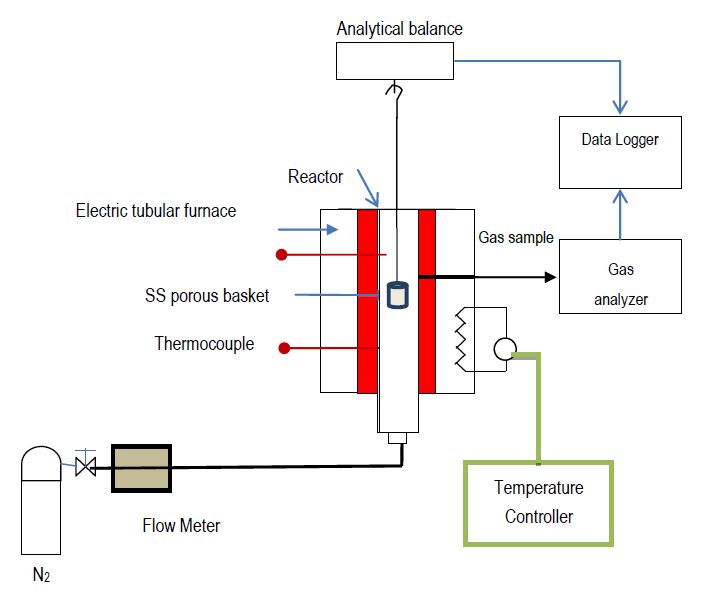
 DownLoad:
DownLoad: 